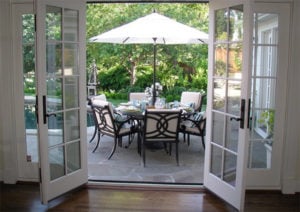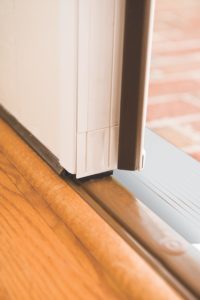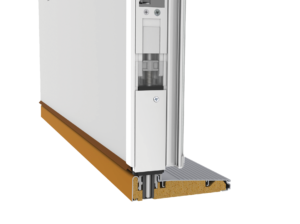French doors are a beautiful addition to your home that create visual interest while also functioning as a doorway to outdoor living spaces. These configurations allow natural light to brighten indoor spaces and also let summer breezes pass through when open.
Although French doors are a beautiful way to showcase your home, French doors contain several components that allow them to perform over time. Today, we’re exploring astragals and common questions you might have about your French door component.

Photo Credit: http://www.homedesignetc.com/
What is an astragal?
Some may say an astragal is one of the most important parts of a French door system. The astragal is a vertical component between door panels that allows your French door system to lock out unwanted guests, seal out water and air, and keep insects outside your home.
Where is the astragal?
Located in the center of the two French door panels, the astragal is attached to the inactive door panel, or the panel that is not typically used for entry and exit.

Photo Credit: https://www.bayerbuilt.com/
Parts of an Astragal
Most astragals have three key components that are essential to basic astragal performance. The first component is the astragal body. The astragal body runs the full length of the door panel and houses the internal mechanisms, protecting the them from damage. The astragal body is typically what you see most easily and may be offered in a variety of finishes to best match your style. Astragal bodies can be constructed of wood, aluminum or a hybrid of the two.
Next – the astragal flush bolts and boot. The astragal bolts lock the inactive panel into place, protecting your home from outside intruders. Astragals have an upper and lower bolt that may be available in various lengths depending on the level of security and various configurations for operation, including slide, flip and push button.
The astragal boot is located on the bolt and seals to keep drafts and moisture from entering your home. The astragal boot can be either fixed or floating and can be easily identified on your astragal by looking around the bolt. Fixed boots rely solely on drill-hole depth to seal the system, while floating boots use built-in springs to automatically provide the tightest seal.
Fixed Astragal Boot
Photo Credit: Endura Products

Floating Astragal Boot
Photo Credit: Endura Products
Lastly, metal strike plates on your astragal indicate the area where the deadbolt locks the French door panels together. Strike plates are available in a variety of metal finishes to suit your style and aid in proper French door operation. All in all, the benefits of an astragal don’t stop with beauty and style. Each component works with another to provide quality sealing and security for the entire system. The flush bolts secure the inactive door panel, while strike plates work with the deadbolt to secure the active panel and lock out intruders. The astragal boot seals out air, water and bugs, giving you peace of mind year-round.
Go ahead, take a look! Explore your astragal and review our guide on identifying your astragal here. Also, be sure to check back next time for our blog about French doors and outdoor living spaces this summer.
